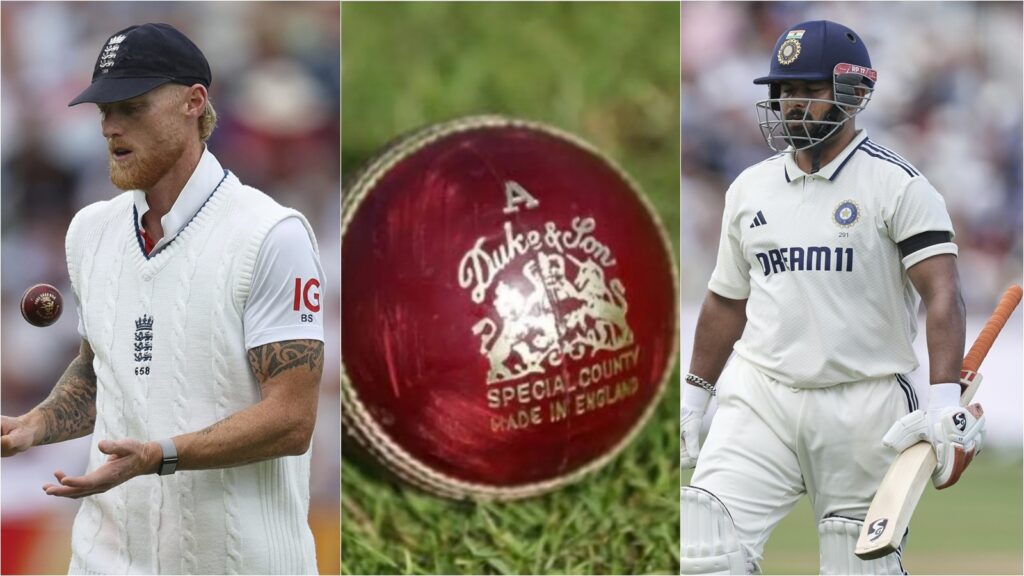The second Test at Edgbaston had thrown up a serious problem of the ball going out of shape far too soon, triggering frequent visuals of players from both teams asking the umpire to change the ball. The rules as it exists is that the umpire then slips the ball through a ‘ball gauge’; if it slips through without an issue, the same ball is retained, and if it gets stuck, then the ball is changed.
England’s captain Ben Stokes made a rather interesting observation a day before the third Test about that ball gauge. Stokes suggested that that piece of testing equipment was not compatible for the Duke balls.
“I don’t even think the rings that we use are Dukes rings, it isn’t ideal,” Stokes said. It seemed to raise an interpretation that Stokes means there should be different ball-gauges for different balls – be it Dukes, Kookaburra or India’s SG ball.
Rishabh Pant agreed that there is a problem with the ball going out of shape, but didn’t subscribe to the theory that there should be different ball gauges customised for different balls.
“I feel the gauge should be the same … Ring can be the same for both the balls,” Pant said. Though he would joke that “thoda chota hoga toh better ho jayega!” (If the ring was smaller, it would be better!). When you see the ball, you can see it goes D-shaped (out of shape), but rules are such that it’s not up to us.”
The Law stipulates that a cricket ball, when new, “shall weigh not less than 5.5 ounces/155.9 g, nor more than 5.75 ounces/163 g, and shall measure not less than 8.81 inches/22.4 cm, nor more than 9 inches/22.9 cm in circumference”. That’s for men’s cricket.
For the women’s game, the ball is smaller in size and lesser in weight. For women, the law says that the weight should be “from 4.94 ounces/140 g to 5.31 ounces/151 g” and the “circumference should be from 8.25 inches/21.0 cm to 8.88 inches/22.5 cm”.
Story continues below this ad
The owner of the Dukes cricket ball Dilip Jagjodia had spoken to The Indian Express on Tuesday and had addressed the issue. “If I made a really hard ball, it would have broken bats. That’s the problem, we have to be careful … We’re making the balls to the original British standard. I’m a very stickler for the rules, I make sure that we do the best we can. I select the balls personally, I present them, and if you look at them, they are the most beautiful things on the planet. When you play with them, that’s out of my control. How many runs have been scored, who hit the ball, these are the variations.
Both Stokes and Pant felt that the ball going out of shape too soon was not good for the game.
“It seemed like a big issue last week at Edgbaston,” said Stokes. “Whenever we have touring teams visiting there is an issue with the balls going soft and completely out of shape. But you have to deal with it.”
Pant put it thus: “In this series , the ball is getting out of shape too much. It hasn’t ever happened this much in the past. It does get irritating as players. Sometimes a soft ball doesn’t do too much but when they change it, it starts doing something. As a batsman you have to adapt. But for cricket it’s not good eventually (balls going out of shape so soon).”


